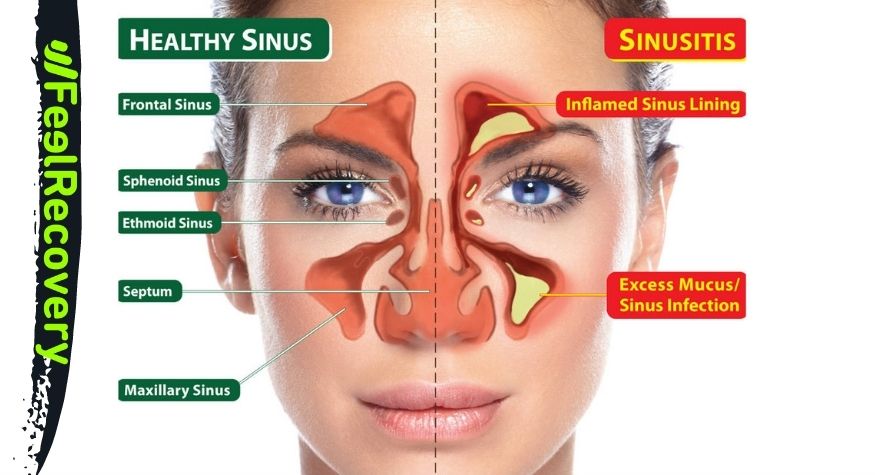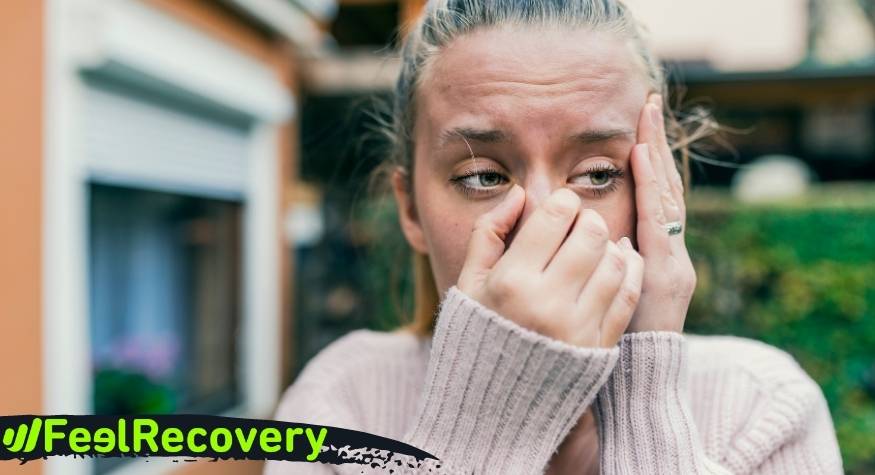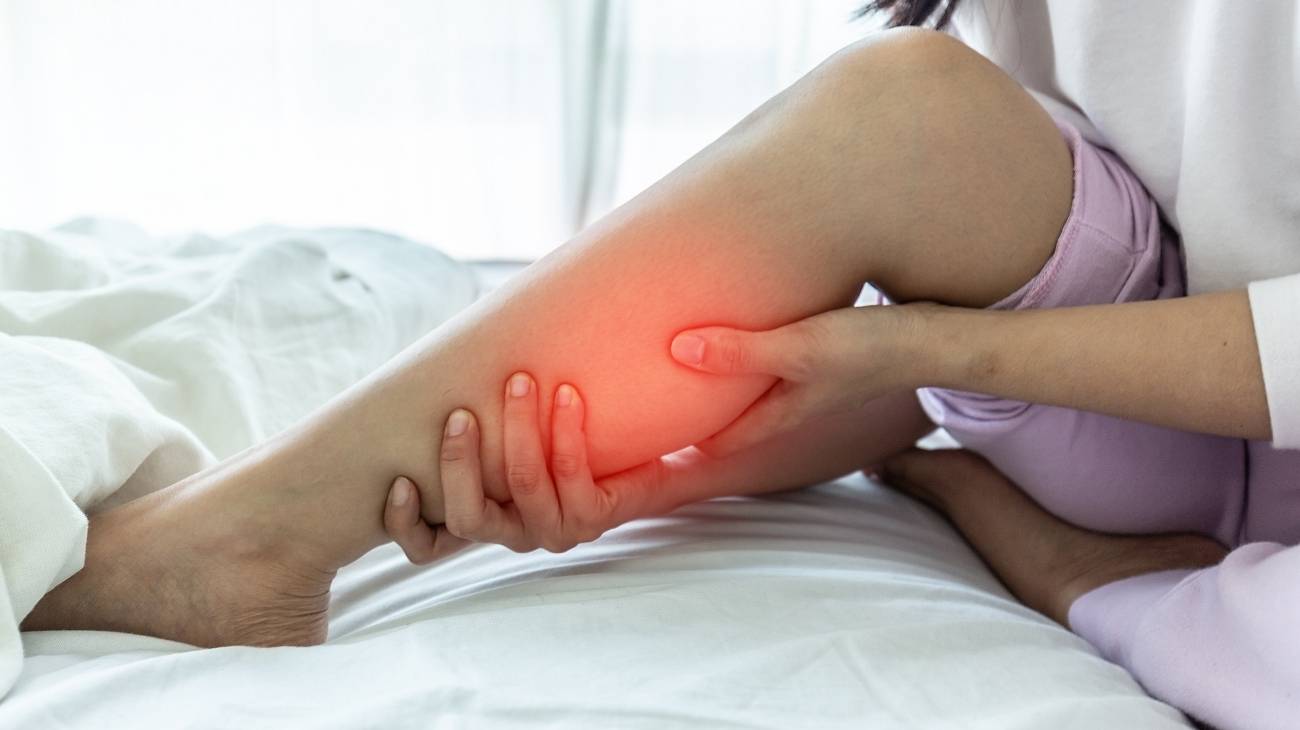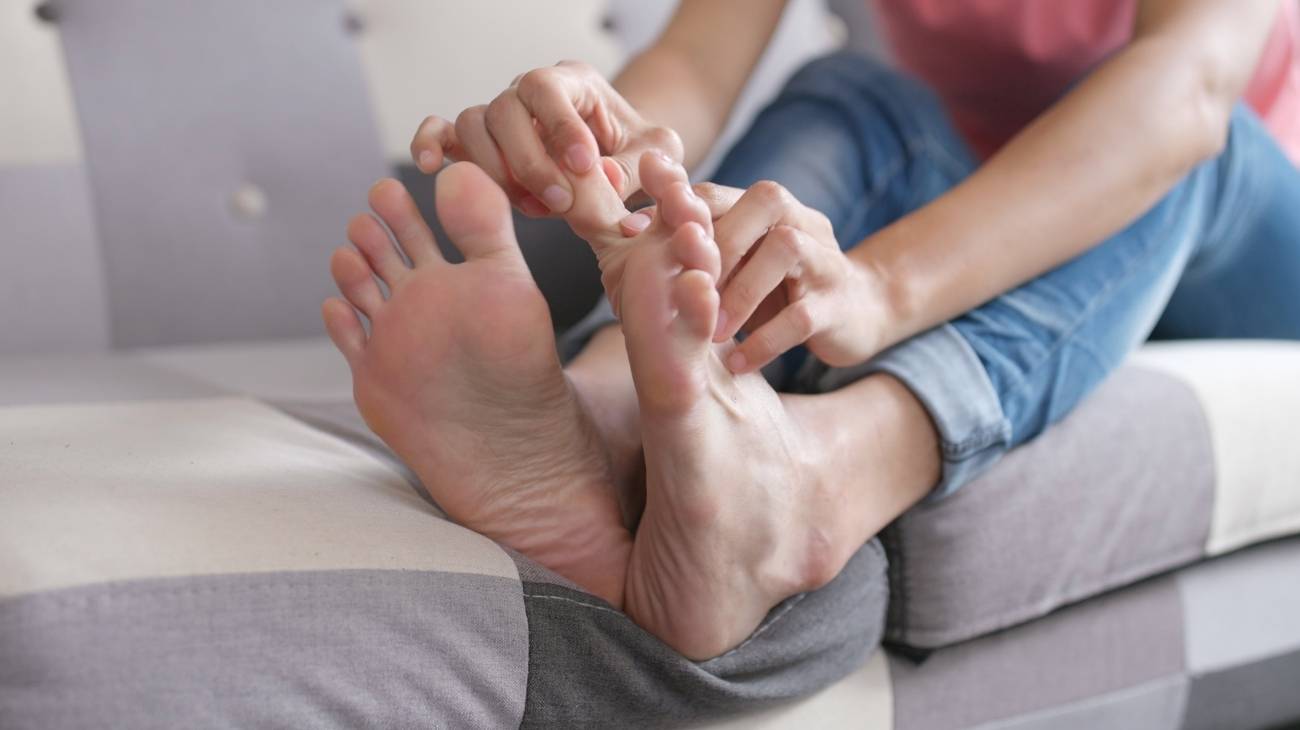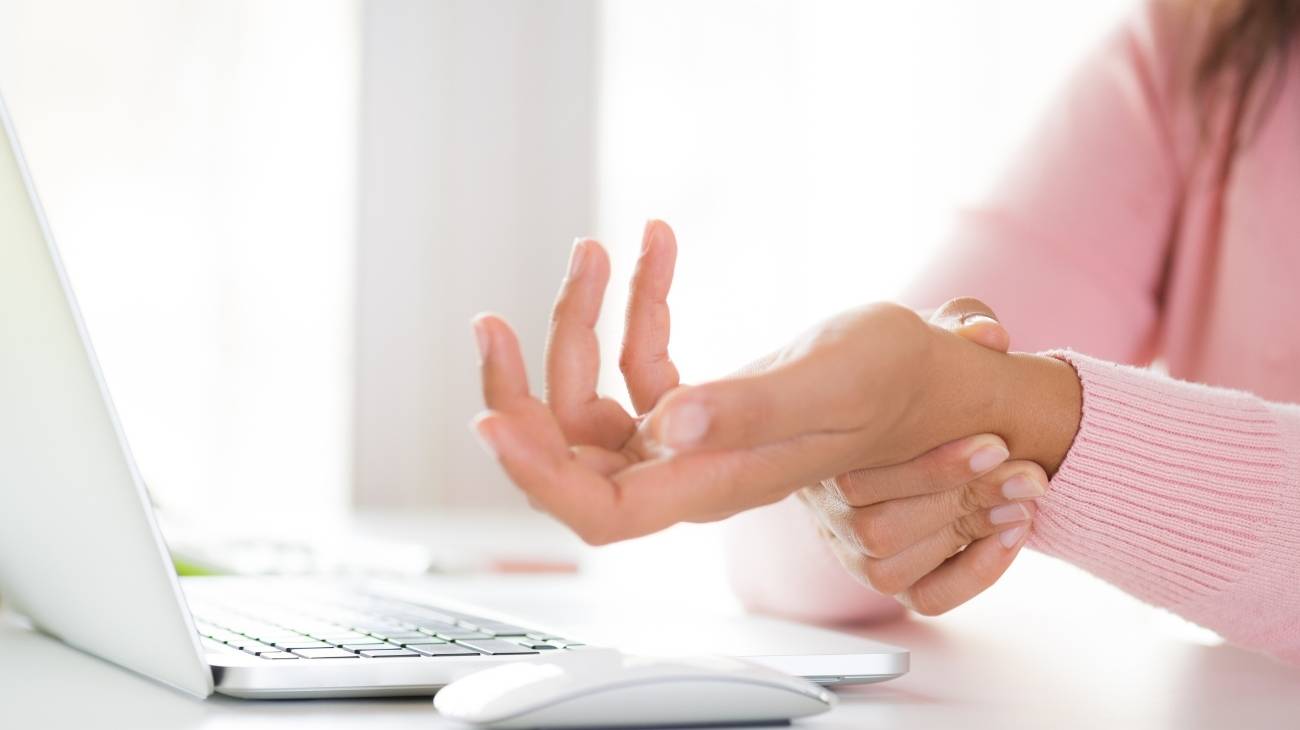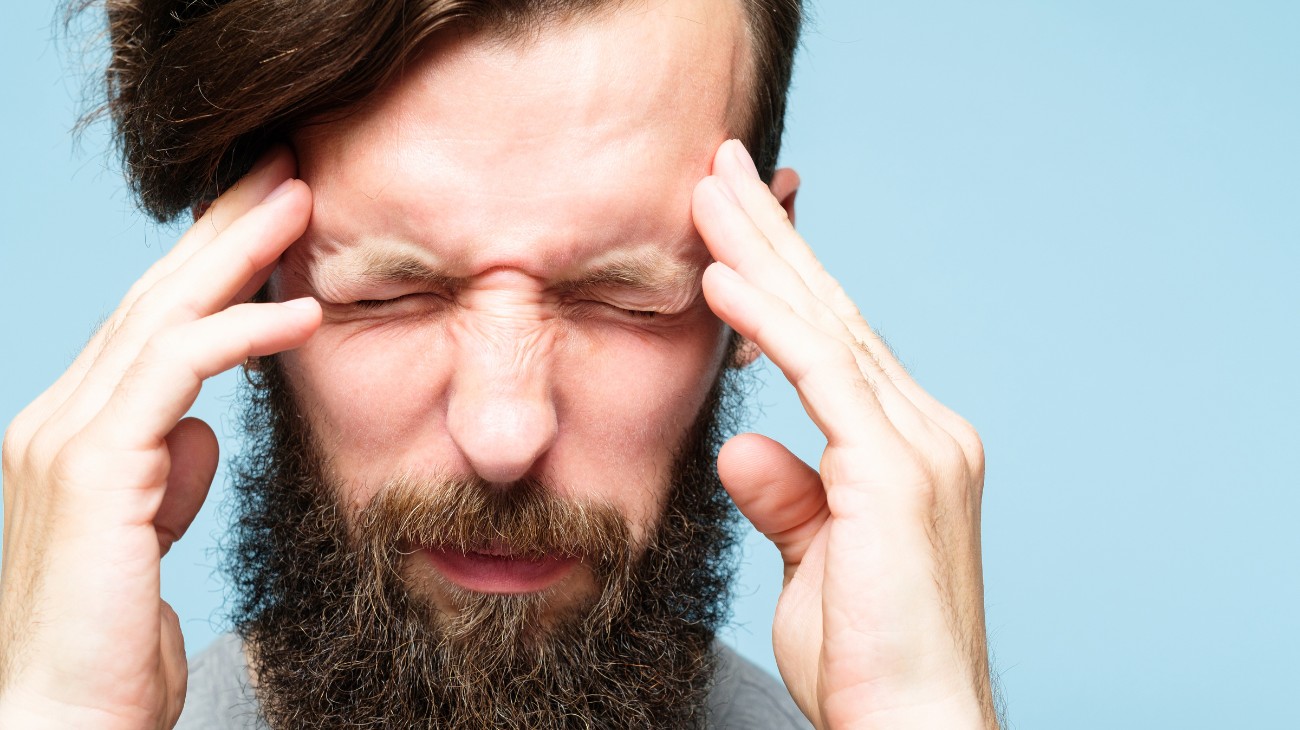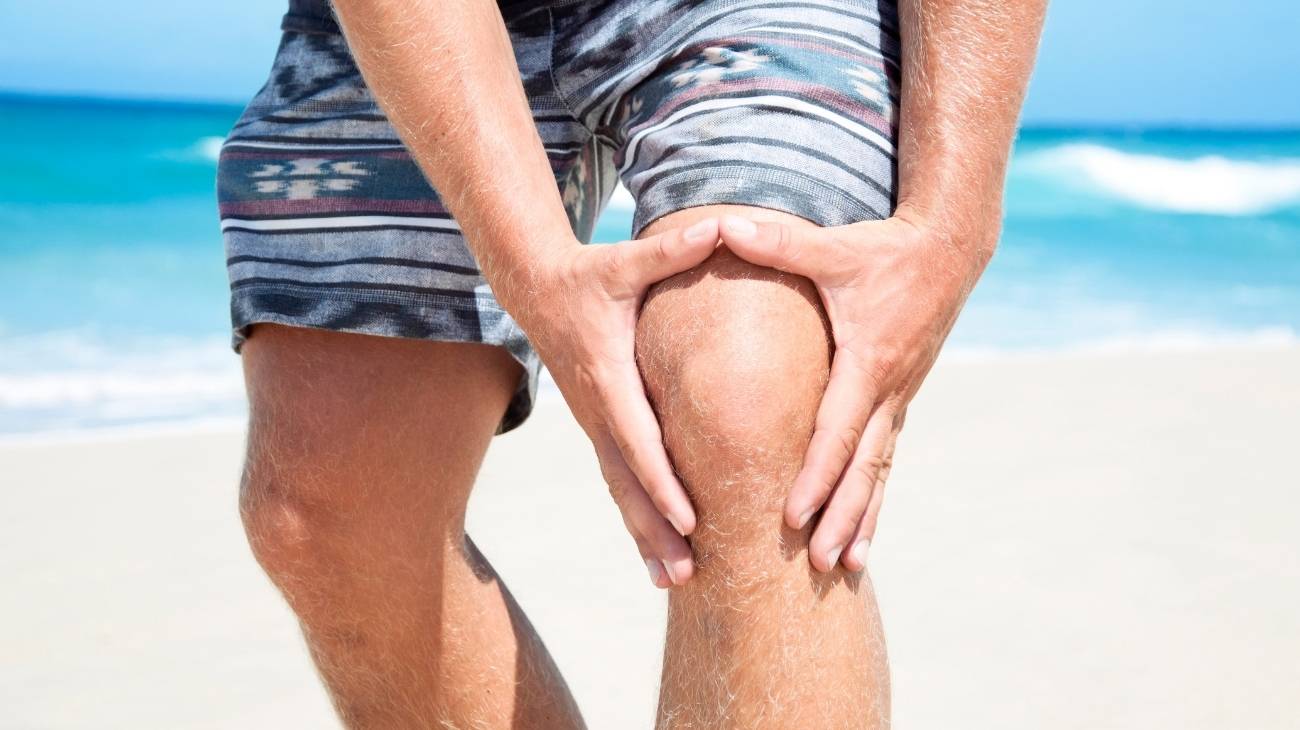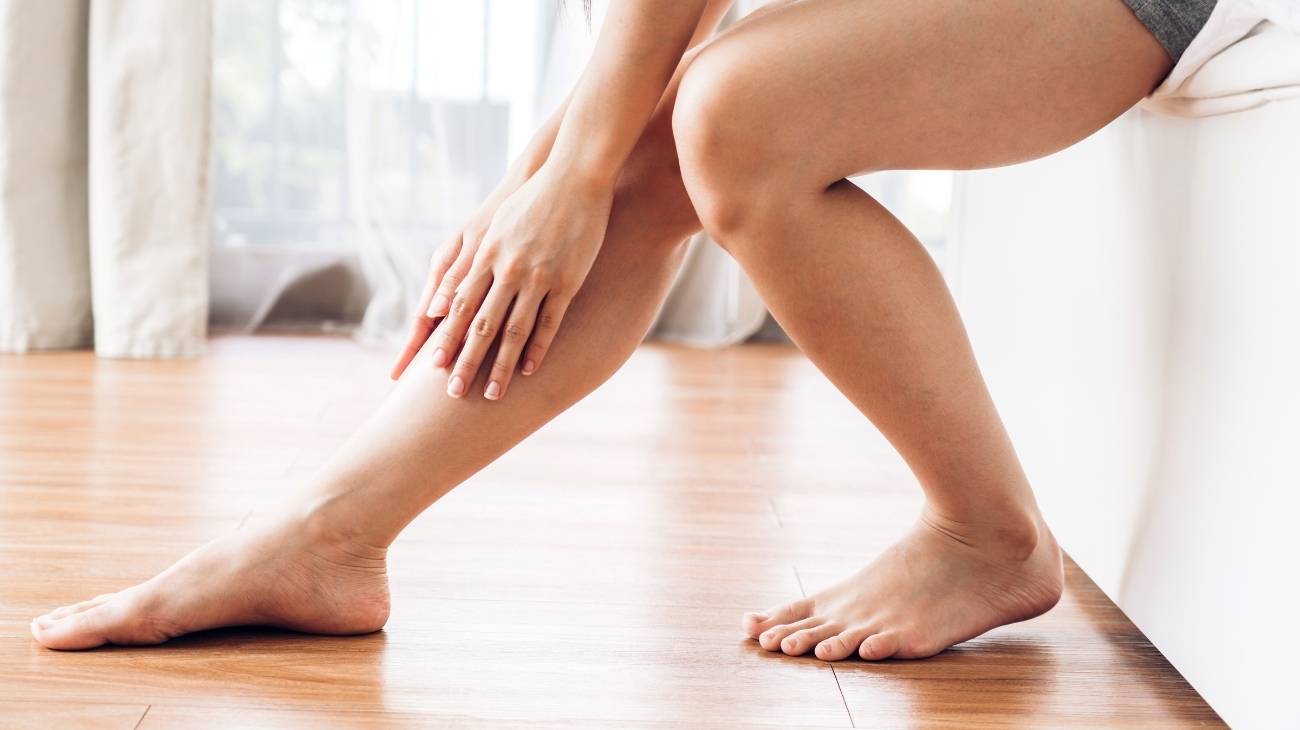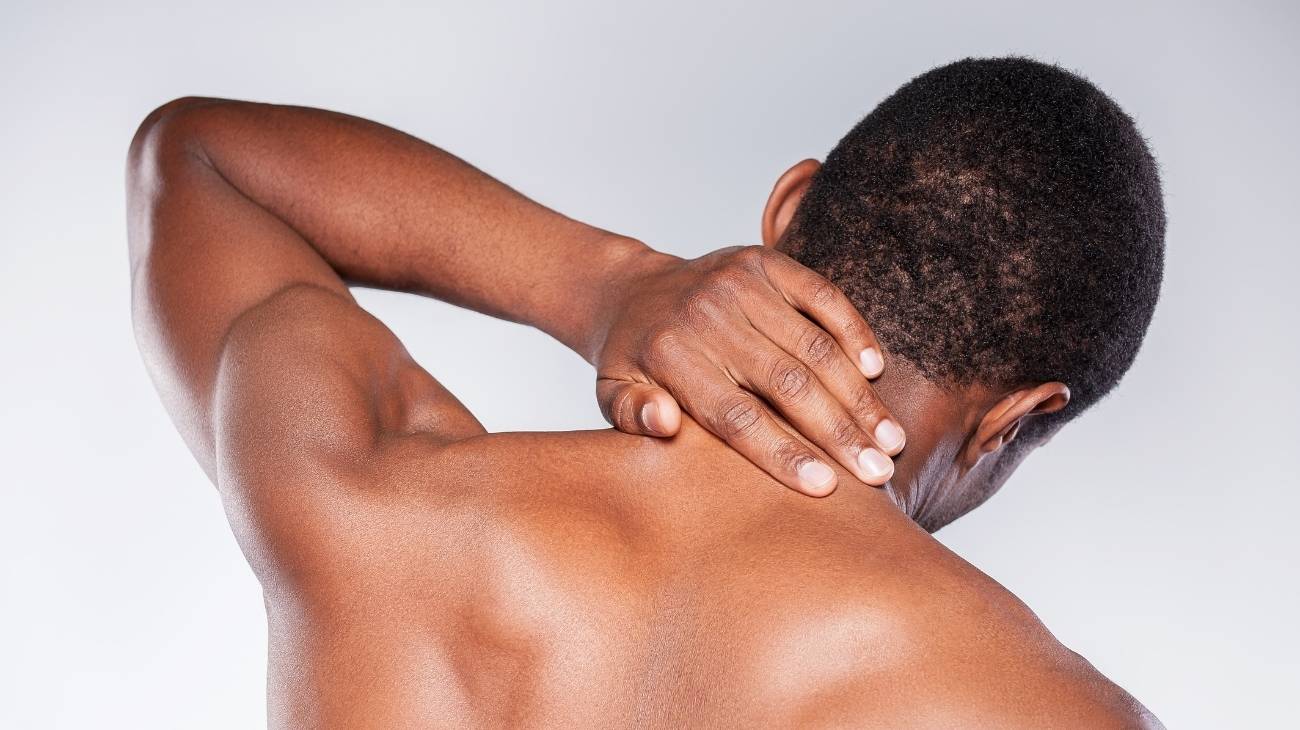- What is sinusitis or sinus pain and how to identify it?
- Best products for head, face and eye pain relief
- What causes head, neck, ear and eye pain due to sinusitis and what are the causes?
- What are the symptoms and types of pain that make us think we have sinusitis inflammation?
- How can sinus headaches be relieved by complementary therapies without medication?
- When is it necessary to see a doctor to cure sinus pain or inflammatory nasal diseases?
Sinusitis is a pathology that, despite being quite common, is not as well known as it should be and, in its initial phase, is often confused with other pathologies, which means that its diagnosis is delayed and it can become chronic.
You will find out what the symptoms are and the easiest way to identify sinusitis. Of course, you will find out how to treat it naturally and non-invasively, how to prevent it, when you should see your doctor and lots of information about all types of sinusitis.
What is sinusitis or sinus pain and how to identify it?
The sinuses are the hollows between the bones around the nose. That is, those located in your bones, in your eyes, cheeks or behind your forehead. They are connected to the nasal cavity and are lined by mucus-producing cells. Sinusitis is the inflammation of the tissues of these cavities. This inflammatory reaction is caused by infection, not by trauma or as a symptom of other diseases.
Knowing if you have sinusitis is not difficult. The problem is that it is a pathology that we don't usually think about, and since its symptoms are similar to those of other ailments, we tend to make mistakes in self-diagnosis. So, of course, although we will tell you how to find out if your sinuses are inflamed, we always advise you to see your doctor.
In the first instance, you will feel similar to when you have a cold or even flu-like symptoms. You may notice congestion, runny nose, sore throat, cough, headache or even fever, accompanied by general malaise. Up to this point, as we say, you may think you have pharyngitis, flu or another illness affecting the throat.
Moreover, while flu, meningitis, pharyngitis, tonsillitis and other illnesses usually appear and disappear within a week without complications, sinusitis is more likely to last longer and become more serious, especially if we do not treat the main cause, as the infection will remain.
Types of sinusitis according to the length of time we suffer from it
This is a simple classification of the pathology in which we take into account the length of time the symptoms last. It is important to control this factor when you go to the doctor, because, depending on this, important decisions will be taken and it will be considered whether the problem is following its usual course or whether it is becoming more complicated.
- Acute sinusitis: This is the shortest-lasting sinusitis. Its effects can last up to four weeks.
- Subacute sinusitis: At a mid-point is subacute sinusitis, which can last up to three months, with symptoms still moderate or some even in a severe phase.
- Chronic sinusitis: This is the most prolonged, with most of the symptoms lasting more than three months. Symptoms tend to become less severe. Some disappear, especially the fever, and it is not common for them to occur intermittently. Others remain in their milder version.
Types of sinusitis according to the affected area
Another type of classification is made by considering the affected areas. By knowing this and detecting some symptoms, you will be able to rule out one of the types.
- Sphenoidal sinusitis: If you suffer from this pathology, you will notice that the pain you feel is in the highest part of your head. The area up to the ear (including the ear) is also affected. This also includes the neck, eyes and temples. The affected sinuses are behind the eyes, at the level of the eyes and ears, in the innermost part of the head.
- Ethmoidal sinusitis: In this case, we will notice discomfort behind the eyes and between the eyes, very focused and stabbing. The pain often goes down the sides of the nose. The affected nostrils are immediately behind the eyes and before the sphenoid sinuses.
- Frontal sinusitis: As the name suggests, this affects the area of the forehead, above the eyebrows and upwards. The vertical pain in the forehead is very particular and easy to recognise. Sensitivity to touch is also possible.
- Maxillary sinusitis: The pain occurs between the eye and the nose, i.e. in the cheekbones. It may also go down to the upper dental arch. It is often confused with toothache, because you are suffering from dental pain, so you should pay attention to this.
- Pansinusitis: In this case, the inflammation affects the entire sinus area, with pain throughout. It is more common to feel tired or congested if you have pansinusitis, and you will also notice that most of the local symptoms of the disease are present.
Best products for head, face and eye pain relief
Bestseller
-
Acupressure Mat and Pillow (Black/Gray)
$49.95 -
Acupressure Mat and Pillow (Green/Navy)
$49.95 -
Acupressure Mat and Pillow (Pink/Bordeaux)
$49.95 -
Acupressure Pillow (Black/Gray)
$29.46 -
Acupressure Pillow (Green/Navy)
$29.46 -
Acupressure Pillow (Pink/Bordeaux)
$29.46 -
Gel Eye Mask for Puffy Eyes (Gold/Black)
$11.95 -
Gel Eye Mask for Puffy Eyes (Orange/Pink)
$11.95 -
Gel Eye Mask for Puffy Eyes (Purple/Turquoise)
$11.95
What causes head, neck, ear and eye pain due to sinusitis and what are the causes?
There are various pains that are suffered when we have a sinus condition. These are caused, as we have said, by an inflammation that occurs in part or all of the area of the paranasal cavities.
Paranasal infection
This inflammation, in turn, is caused by an infection or infestation. Viruses and bacteria as well as fungi in the area can lead to this pathology. There is no other reason than this. This, in turn, will occur because we are unable to expel the mucus.
Although mucus has a protective function and keeps the nasal areas moist, it can harm us. It is precisely this protective function that is partly due to the viscous texture of the nasal mucus, which means that potentially harmful elements for our organism remain adhered and cannot enter our body. If this microbe-filled mucus is not expelled, it can lead to infection or infestation.
Why don't we expel mucus? Let's look at the most common causes:
- Altered ciliated hairs: The cilia in the sinuses are not able to remove mucus properly. They may do so too slowly, more than the mucus is being produced, and thus become clogged. In turn, this ciliary dysfunction may be caused by conditions such as ciliary dyskinesia or immotile cilia.
- Protuberances: If the area where the mucus moves to be expelled has elements blocking it, such as a polyp, a spur or the deviated nasal septum itself, the exit will be more difficult and slower.
- Blockage of the opening of the sinuses: For the same reasons, it is possible that there is a blockage in the opening of the sinuses, which, in the same way, would make it difficult or, directly, prevent the expulsion of this substance.
- Allergy: Symptoms of allergy include excess mucus secretion as well as general difficulties in the respiratory tract functions that facilitate its accumulation and make it difficult to expel.
- Inhalation of irritants: Breathing in and introducing irritating foreign elements such as pollutants, smoke or chemicals will cause the system to suffer and function worse across the board. In addition, much more mucus than usual will be generated to stop these particles.
- Excess mucus: Excess mucus is produced when we suffer from an allergy or a cold in order to protect us more. However, no matter what the cause, having excess mucus is the main problem.
Other risk factors
Although we have already seen how paranasal infections are generated, there are other ways in which mucus is secreted or accumulates.
These are factors that increase the risk of sinusitis and include:
- Prolonged exposure to mucus: This would include being a baby-sitter, working in a nursery school or something as simple as parenting.
- Smoking: Smoking is generally detrimental to health and in this case even more so.
- Change of altitude: This puts us under pressures we are not used to.
- Presence of an abnormal structure in the sinus area.
- A weakened immune system: The most common reasons for this are chemotherapy or HIV.
- Other diseases: Cystic fibrosis, allergic rhinitis and diseases that modify the action of the cilia.
- Having large adenoids.
What are the symptoms and types of pain that make us think we have sinusitis inflammation?
It is essential, in addition to knowing how and why sinusitis occurs, to know what the symptoms are and, of course, what pain this pathology causes, as our attention is focused on trying to alleviate the pain caused by sinusitis.
Most common types of symptoms
If you have sinusitis, you may suffer from any of these symptoms:
- Headache: A very common symptom is a headache, which is usually mild but can sometimes be extremely annoying to the point of preventing us from carrying out our daily activities.
- Facial pain around the eyes, on the forehead or face: The contact of the inflamed mucous membranes with the bones obviously causes pain. Depending on the area affected by the infection, the pain will be in one part or another. The pain increases if we lean forward.
- Pressure: This is one of the symptoms that can best help us to make a diagnosis. Often there is no sinus pain, but rather a kind of pressure that occurs in the areas of the eyes, nose, ears, neck and skull; we feel as if we were constantly being pushed in the area on a continuous basis. You may feel prickling in its most acute phase, although this is not always the case.
- Fever: This is moderate, the result of our body's work to defend us from microbes and to control inflammation.
- Mucopurulent discharge: The mucus that we are releasing is not clean like the mucus we usually generate, which is almost colourless and is quite fluid and homogeneous. You will notice that it becomes more greenish or even yellowish.
- Dripping: Our mucous membranes are releasing mucus without it being fully formed, liquid, which falls without us being able to practically control it. This includes both rhinorrhoea and postnasal drip, which is lost in the throat.
- Nocturnal cough: The cough may occur only at night or it may occur throughout the day but worsen during sleeping hours, making it difficult to sleep.
- Nasal obstruction: Obviously, and as has happened until we caught the infection, we will have excess mucus that will obstruct our airways. This may mean that it is more difficult to breathe and that we breathe through our mouths.
- Nasal voice: The melody of our voice is modified by the temporary damage that the nasal structures are suffering, by the dental pain that we suffer or by the abundance of mucus.
- Halitosis: When the infection descends into the throat (this usually occurs in sub-acute or chronic cases), which happens more often if we have fungi or viruses, we may have a bad smell in our mouth. We will also find this symptom if we have to breathe through the mouth or if we have retro nasal drip, especially when the mucus is dirty.
- Snoring: Also as a consequence of having nasal obstruction and breathing through the mouth we can start to snore or make our snoring sound louder. If we spend too much time like this, it is possible that, after the sinusitis has been cured, the breathing habit will remain and we will continue to snore.
- Anosmia: When the nasal membranes become inflamed, they cannot perform their functions properly, one of these being that of perceiving and discriminating smells.
- General discomfort: Like many other pathologies that fatigue our respiratory system, due to its easy dispersion to nearby areas, general discomfort manifests itself. This is more severe the more sinuses are affected.
- Tiredness: Be careful because this can be a very clear sign of sinus symptoms. It is not the same thing to feel unwell as to feel tired. When this happens for no reason, it is probably because you do not have a cold or the flu, but because you have sinus symptoms.
- Pain in the roof of the mouth or in the teeth: The mouth, and especially the upper dental arch, can also be affected. This is almost always the case with maxillary sinusitis.
- Pain and discomfort in the throat: This does not occur in all cases of sinus inflammation, but it is not a rare symptom either. It is more common when suffering from maxillary sinusitis, due to the short distance to the throat, which would also become infected. It is, however, tedious, because it confuses us and leads us to make a false diagnosis on many occasions. Our throat may be sore from breathing through the mouth if our nose is obstructed.
Types of symptoms and pain depending on the area
We already know that inflammation can occur in one or more of the sinuses. Although many symptoms are identical in all cases, there are others that occur, more or less frequently, only in some types of sinusitis.
- In the upper skull: It is curious that there is a symptom that only occurs if you suffer from sphenoid sinusitis. This is a lack of concentration or difficulty in concentrating. We may also notice a headache and pressure in the temples.
- In the inner skull: Headache is also very common. It can be isolated and focused or extend to areas such as the space between the eyebrows or the vertex.
- In the eyes: The inflammation itself and also the headache can cause us to feel pain behind the eyes, both physical and neuropathic. In isolated cases, inflammation of the eyelids may be reported, although inflammation around the eyes is common. There may also be some abnormality of vision, which is also rare.
- In the nose: As in the eyes, pain can also be reported in and around the nose, both from the inflammation process itself and, secondarily, from continually blowing our nose, applying sprays, scratching if we feel itchy due to the dripping mucus, etc. Be careful because we may also notice a nasal voice, which is less common than many of the other symptoms we are seeing.
- On the cheeks: The cheeks may feel sore if you have inflammation from maxillary sinusitis. This is an intermediate area between two sensitive points such as the cheekbone prominence and the upper gum.
- In the mouth: In the mouth it is common for the upper dental arch and gums to hurt, as well as the upper jaw in the mid-lateral area (under the cheekbone and over the premolars). In addition, we will report bad breath both from breathing through the mouth and if the infection reaches our throat or if we have a lot of obstructed mucus and it is very dirty or purulent.
- In the throat: A sore throat is caused by infected mucus coming into contact with the mucous membranes of the throat. Thus, it usually only occurs if you also have postnasal drip. If it is dry, it will be due to breathing through the mouth, being a consequence of the obstruction of a section of the nasal passages.
- In the ears: The ear may ache in a similar way to when we catch cold. The positive thing about this is that it is only suffered in the steps of sphenoid sinusitis or pansinusitis.
- In the neck: The maxillary sinus process can extend beyond the mouth and ear and into the neck. This can cause us to confuse the pain, believing we have a muscle strain that causes the other pains, fatigue, etc.
- In the face: Sensitivity can occur in the face, but especially in the forehead.
- Sensitive symptoms: There are signs of this pathology that do not occur in any part of the body but are general. Fatigue or tiredness and fever are the most evident and the most common. There is also, unusually, a lack of coordination. As a product of the damage to the structures, we notice that the voice becomes nasal. Temporary loss of smell may occur.
How can sinus headaches be relieved by complementary therapies without medication?
We describe which types of complementary and alternative therapies will work best to relieve sinus pain, especially headaches.
Thermotherapy
Heat can reduce or even eliminate various symptoms of sinusitis. It is especially important in decongesting the nose and nasal passages, so that mucus can gradually drain out. This makes it easier for the infection to clear up.
Warm steam breaths will help thin the mucus, improving drainage while opening the nostrils and reducing pressure. In addition, we will be able to breathe better and, as a result, snoring or bad breath will subside.
Applying warm compresses or cloths to the areas where we feel pain will reduce the pain, as with any pain in its non-acute phase. It is very important to use thermal pillows for microwaves as the heat they give off is very beneficial. They are also filled with lavender flowers and these will help to decongest the area. In addition, the high temperatures relax us, helping us to cope with fatigue and fatigue is less intense, because we will rest more fully.
Cryotherapy
Applying cold on certain occasions will also reduce some symptoms, relieving, for example, headaches. This discomfort is caused by pressure on the nerves and by the displacement of the tissues themselves; the low temperature will help us in both cases both to numb the nerves and to reduce inflammation and blood flow in the inflamed sinuses.
In general, applying cold will help the inflammation to subside, not only in the sinuses but also in the throat if it becomes infected. The same is true, for example, when our cheeks hurt, which is caused by an excess of blood flow, which will be reduced if we put cold gel packs or ice eye masks on our face.
However, sinusitis is not a pathology that can be cured with very intense cold, it should be mild. Therefore, do not abuse this remedy or apply extreme cold; remember that a very low temperature can be counterproductive and increase other symptoms such as skin sensitivity.
Massage
There is sinus massage, a practice specially designed to treat the pathology itself and some of its symptoms. It is performed by applying gentle pressure with the fingers to break up the mucus and make it come out more easily. In addition, it is common to use heat, either by rubbing the hands together or by immersing them in hot water. This does not make sinusitis disappear, but it is possible for the infection to be cured sooner, as we will remove the microbes that are acting against us.
Below is a list of the most commonly used types of sinus massage:
- For the sinuses: Place fingertips 2 and 3 of both hands on the brow bone and make circles moving in the direction of the temples, then back to the centre. Half a minute should be enough.
- For the maxillary sinus: Place these fingers on the sides of the nostrils, under the cheekbones. Make gentle outward circles for 30 seconds.
- For the ethmoid and sphenoid sinuses, located behind the eyes in this order: use fingers 1 and 2 to touch the bridge of the nose, between the nose and the inner corners of the eye. In this case, the pressure should be increased a little, being moderate, although the action time should be 15 seconds. After this, make very slow strokes on the sides of the nose, moving down from the initial position and bringing the fingers outwards, skirting the nose and drawing the arch of the eye under the eye underneath it. The aim is to stimulate the retro-nasal drip in the area that joins the tear duct.
Acupressure
Acupressure helps us to treat symptoms and even illnesses by pressing certain points on the body that are connected to other points that need to be cured. In this case, we must look for those points that intervene in the processes that occur in the sinuses as well as in the areas where we feel pain.
The GV 24.5 point, located between the eyebrows, is the main one. It should be pressed with a thumb while placing the tongue on the roof of the mouth, pushing upwards. Hold the pressure and tongue position for half a minute. There is a generalised relief in the area itself.
Next we find point B2, located on the inner-central side of the eye sockets, just below the eyebrows. You can find it easily because there is a small hollow between the bony areas; this is the point to work on. We must place our thumbs in the hollows to press inwards, forming an acute angle with the nose. This relieves the pressure in the sinuses.
Three more points are located under the cheekbones, which are placed in the hollow between the cheekbones and the upper gums. Use fingers 2 and 3 together to apply constant pressure to this area. This promotes nasal decongestion and will also work well if you find yourself with head discomfort.
Finally, place a small hollow in the area next to the nostrils, above the upper lip, about vertical to the fang. This is the LI 20 point. Press it to deflate the sinus while bringing about a substantial improvement in nasal congestion.
Other effective alternative therapies
In addition to these, which are considered to be the most effective and, incidentally, the most famous and reliable, there are other alternative therapies with which to improve sinusitis:
- Natural remedies using plants: Breathe in steam from plants such as rosemary, eucalyptus or mallow, which reduce mucus and decongest it is very effective. You can also make nasal rinses with infusions of these plants.
- Acupuncture: This is similar to acupressure, but the points are stimulated with needles, which are inserted a few millimetres into the skin. In our case, this is understood as an imbalance in the lung meridian. It can also be caused by too much heat in the gall bladder or spleen meridian or too much dampness in the spleen meridian. There are several acupuncture points that we can target to increase the energy of the lung meridian. These are IG4, IG11 and IG20, Bitong, P7, VB14 and V2, Du23, E2, E3 and E40.
- Osteopathy: With osteopathy we manage to relax the soft tissues, in this case, the sinuses. If you suffer from sinusitis, an osteopathy session would include balancing the cervical spine, movement of the bones of the skull and mechanical emptying of the sinuses. If the condition is chronic, it may be accompanied by an intestinal infection. If so, we will also work on the abdominal region.
- Ultrasound: Ultrasound can be used successfully to treat sinusitis provided that a reducer is used to keep periosteal pain to a minimum. With this practice we achieve a double effect: mucolytic and anti-inflammatory (of the nasal turbinates, infundibulum and sinuses).
- Relaxation: Adding relaxation practices to the treatment will make it more bearable, we will learn to breathe, which helps the airways to work better, we will sleep better and fatigue will not be so severe. In addition, relaxing is essential for the headache to subside and for the pressure on the face to be reduced.
- Aromatherapy: Use Ravintsara, tea tree or Niaouli oils for their anti-catarrhal and anti-infective properties. Just a couple of drops applied around the nose will be more than enough. You disperse them, without them coming into contact with any mucous tissue, and simply breathe normally. Compact oregano oil is very effective, and is usually reserved for severe cases, as it is antiviral and antibacterial, so it is recommended if the infection does not subside after several days.
When is it necessary to see a doctor to cure sinus pain or inflammatory nasal diseases?
A sinusitis condition, if it is not aggravated, does not usually require a medical consultation for treatment. Once diagnosed, you can easily follow the expert's instructions at home.
If you suffer from the following symptoms, we advise you to see a doctor:
- Swelling around the eyes is severe.
- If the eyelids become inflamed.
- Fever of 39°C or higher.
- In children with a runny nose and no improvement.
- When there is pain in the face or headache that does not go away even with over-the-counter drugs (which we do not recommend).
- Symptoms persist after antibiotic treatment, if given, has been completed.
- When there is a change in vision, especially if you become sensitive to light.
- If symptoms remain for more than two weeks.
- When you have a cold that worsens after one week.
- If you find it difficult to coordinate actions.
- If there is a suspicion of meningitis or bone infection.
- If your neck becomes stiff.
- If an abscess develops.
- If there is a skin infection in the eye area.
In these cases, the doctor will decide on your treatment, whether it be changing your medication, extending your doses, referring you to a specialist depending on your symptoms, requesting various tests such as MRI or CT scans, blood tests, cytology or nasal culture, the presence of chlorine in sweat or nasal endoscopy.
References
- Kennedy, D. W., & Loury, M. C. (1988, December). Nasal and sinus pain: current diagnosis and treatment. In Seminars in Neurology (Vol. 8, No. 04, pp. 303-314). © 1988 by Thieme Medical Publishers, Inc.. https://www.thieme-connect.com/products/ejournals/abstract/10.1055/s-2008-1041394
- De Corso, E., Kar, M., Cantone, E., Lucidi, D., Settimi, S., Mele, D., ... & Cingi, C. (2018). Facial pain: sinus or not?. ACTA otorhinolaryngologica italica, 38(6), 485. https://www.ncbi.nlm.nih.gov/pmc/articles/PMC6325651/
- Tarabichi, M. (2000). Characteristics of sinus-related pain. Otolaryngology—Head and Neck Surgery, 122(6), 842-847. https://journals.sagepub.com/doi/abs/10.1016/S0194-59980070011-8
- Kemppainen, T. P., Tuomilehto, H., Kokki, H., Seppä, J., & Nuutinen, J. (2007). Pain treatment and recovery after endoscopic sinus surgery. The Laryngoscope, 117(8), 1434-1438. https://onlinelibrary.wiley.com/doi/abs/10.1097/MLG.0b013e3180600a16
- Acquadro, M. A., & Montgomery, W. W. (1996). Treatment of chronic paranasal sinus pain with minimal sinus disease. Annals of Otology, Rhinology & Laryngology, 105(8), 607-614. https://journals.sagepub.com/doi/abs/10.1177/000348949610500804
- Stewart, M. G. (2002). Sinus pain: is it real?. Current Opinion in Otolaryngology & Head and Neck Surgery, 10(1), 29-32. https://journals.lww.com/co-otolaryngology/Abstract/2002/02000/Sinus_pain__is_it_real_.8.aspx
- Kahnberg, K. E., & Engström, H. (1987). Recovery of maxillary sinus and tooth sensibility after Le Fort I osteotomy. British Journal of Oral and Maxillofacial Surgery, 25(1), 68-73. https://www.sciencedirect.com/science/article/abs/pii/0266435687901598
- Donchin, Y., Feld, J. M., & Porges, S. W. (1985). Respiratory sinus arrhythmia during recovery from isoflurane—nitrous oxide anesthesia. Anesthesia & Analgesia, 64(8), 811-815. https://journals.lww.com/anesthesia-analgesia/Abstract/1985/08000/Respiratory_Sinus_Arrhythmia_during_Recovery_from.12.aspx
- Messinger-Rapport, B. J., & Rudy, Y. (1990). Noninvasive recovery of epicardial potentials in a realistic heart-torso geometry. Normal sinus rhythm. Circulation research, 66(4), 1023-1039. https://www.ahajournals.org/doi/abs/10.1161/01.res.66.4.1023
- Pavis, H., Wilcock, A., Edgecombe, J., Carr, D., Manderson, C., Church, A., & Fisher, A. (2002). Pilot study of nasal morphine-chitosan for the relief of breakthrough pain in patients with cancer. Journal of pain and symptom management, 24(6), 598-602. https://www.sciencedirect.com/science/article/pii/S0885392402005225

